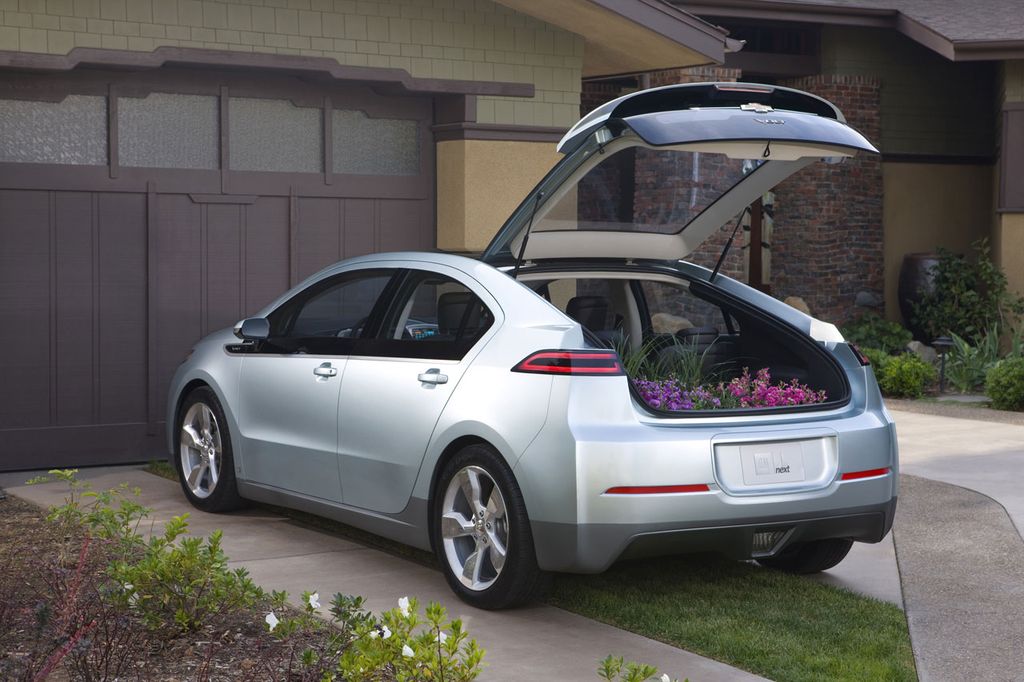

With conservative driving and no A/C, at the ideal temperature over slightly hilly terrain, I'd managed to stretch my typical range by about 30 percent.Ĭould I hit 60 miles on dead-level terrain? I'm pretty sure I could. The Volt's gas engine eventually kicked on at 53.5 miles, four miles from home. But I continued my little-old-lady driving technique as the last three bars blinked off at miles 36.0, 41.9, and 47.1. I gradually came to see the inevitable: I wasn't going to make it home on the battery, and I wasn't going to hit 60 miles. I was paying the piper for the gravity-assisted 6.8 miles of Bar No.4. 6 disappeared almost immediately, and No. But with the temperature now up to 81, the car had become oppressively hot sitting in the sun, and I had to briefly turn on the A/C. When I pulled into the parking spot, I showed five bars and 28.7 miles.Īfter a pleasant open-air lunch, I returned to the Volt and was surprised and delighted to see six bars. A 60-mile round trip looked feasible.īut the sixth bar blinked off-indicating half the battery charge remaining-about a mile short of town, at 27.9 miles. (Presumably it was a bit downhill.) As I approached New Paltz, I was still showing six bars. Sure enough, I got 6.0 miles out of the third bar and an astounding 6.8 miles out of the fourth bar, a 68-mile pace. I was on pace for 48 miles, but I knew things would improve as we entered the flatter part of the route.

The first bar vanished at 4.9 miles-not bad, considering that the first few miles were the hilliest part of the trip. The Volt's battery charge indicator has 10 bars, which blink off sequentially as battery charge wanes. In the few 55 zones, I would maintain at least 45 mph. I did do a bit of coasting here and there, and stayed near the speed limit in 30-mph and 40-mph zones. My tempo was that of a little old lady in no particular hurry. I did not use extreme hypermiling techniques for this drive.
Chevy volt range highway 75mph full#
With a full charge, the range estimator showing 39 miles, and the in-dash thermometer reading 74 degrees, I very gently pulled out of my driveway and very gently accelerated toward New Paltz.
Chevy volt range highway 75mph manual#
(My owner's manual says 35.) The higher the tire pressure, the less rolling resistance.Ĭontinuous electric miles in 2011 Chevrolet Volt range-extended electric car On a last-minute tip from Kevin, I pumped my tires up to 38 psi, the latest updated recommendation for the Volt. (I picked the route partly because I have ridden it on a bike many times, and know all the nuances of its gentle ups and downs.) If I could complete the round trip on battery power, I would break the 60-mile barrier. So my route had to be as flat as possible-a tough assignment in New York's Hudson Valley, as I know only too well from years of riding bicycles around the region.įor my destination, I chose New Paltz, a funky college town about 30 miles from my home, reachable by back roads over reasonably level terrain. But only about 60-70 percent of the battery juice required to get you up the hill is regained coming down the other side.

In another nutshell, the flatter the better.Ģ011 Chevrolet Volt plugged into Coulomb Technologies 240V wall charging unitīecause of regenerative braking, electric cars don't waste as much energy as gas cars climbing and descending hills. That means sticking to back roads where I can keep my speed in the 30-40-mph range without disrupting traffic. Bottom line: I need to drive as slowly as I can. I have not been able to determine the Volt's max range speed, but I'm presuming it's smewhere in the same ballpark. In the Tesla Model S, the max-range speed is about 20 mph. At some point, it actually takes more juice per mile to go slower. Slow to 35 mph and you'll almost double your range.īut electric motors are designed to be efficient in certain rpm ranges, and if you get too slow, the motor starts to lose efficiency. If you're driving a Tesla Model S, for example, you can increase your range 40 percent simply by slowing from 75 mph to 55 mph. So slowing down is the single best way to boost range. Thus drag is four times higher at 80 mph than 40 mph. 2011 Chevrolet Volt on test in Little Rock, Arkansas, July 2011Īerodynamic drag, the primary retarding force on a car at higher speeds, increases with the square of the velocity.


 0 kommentar(er)
0 kommentar(er)
